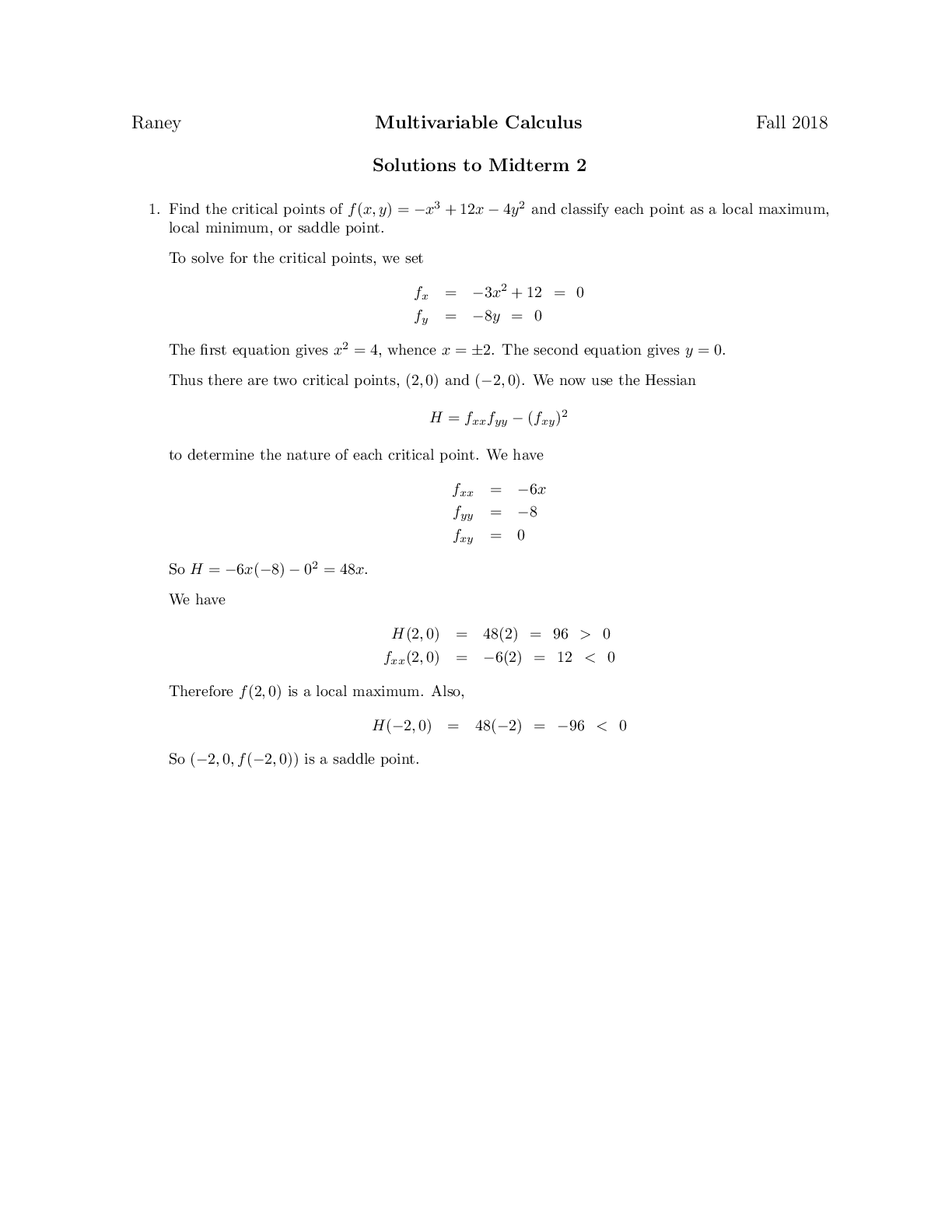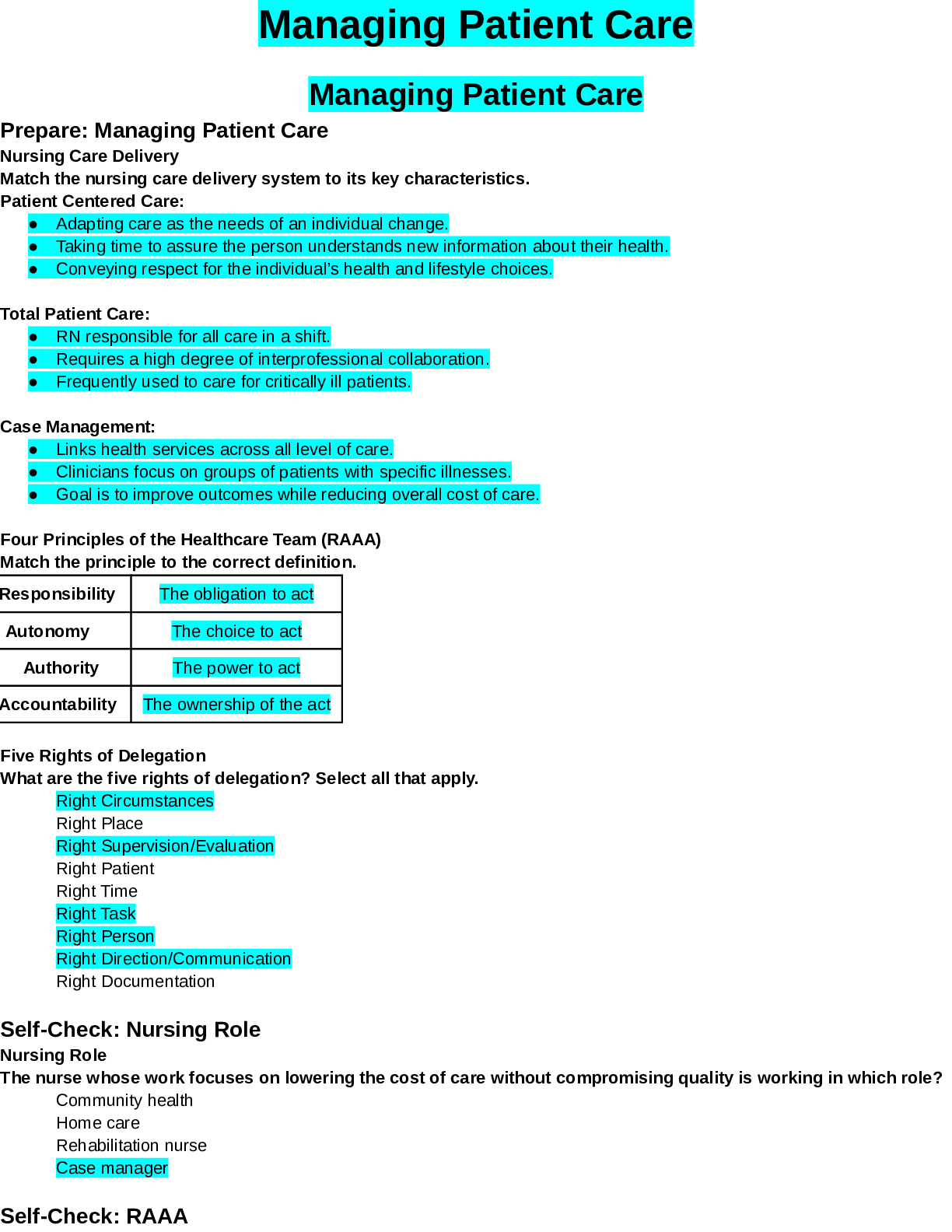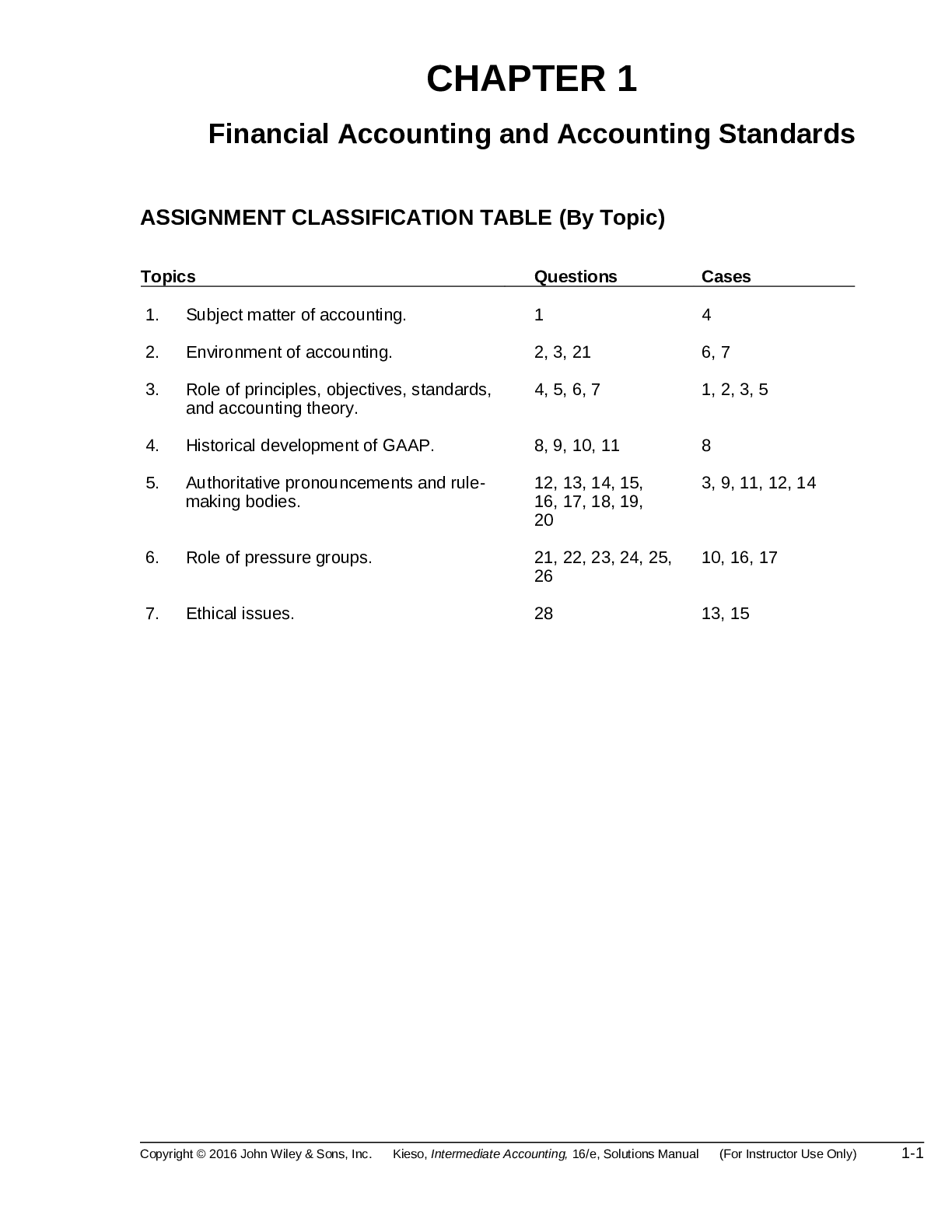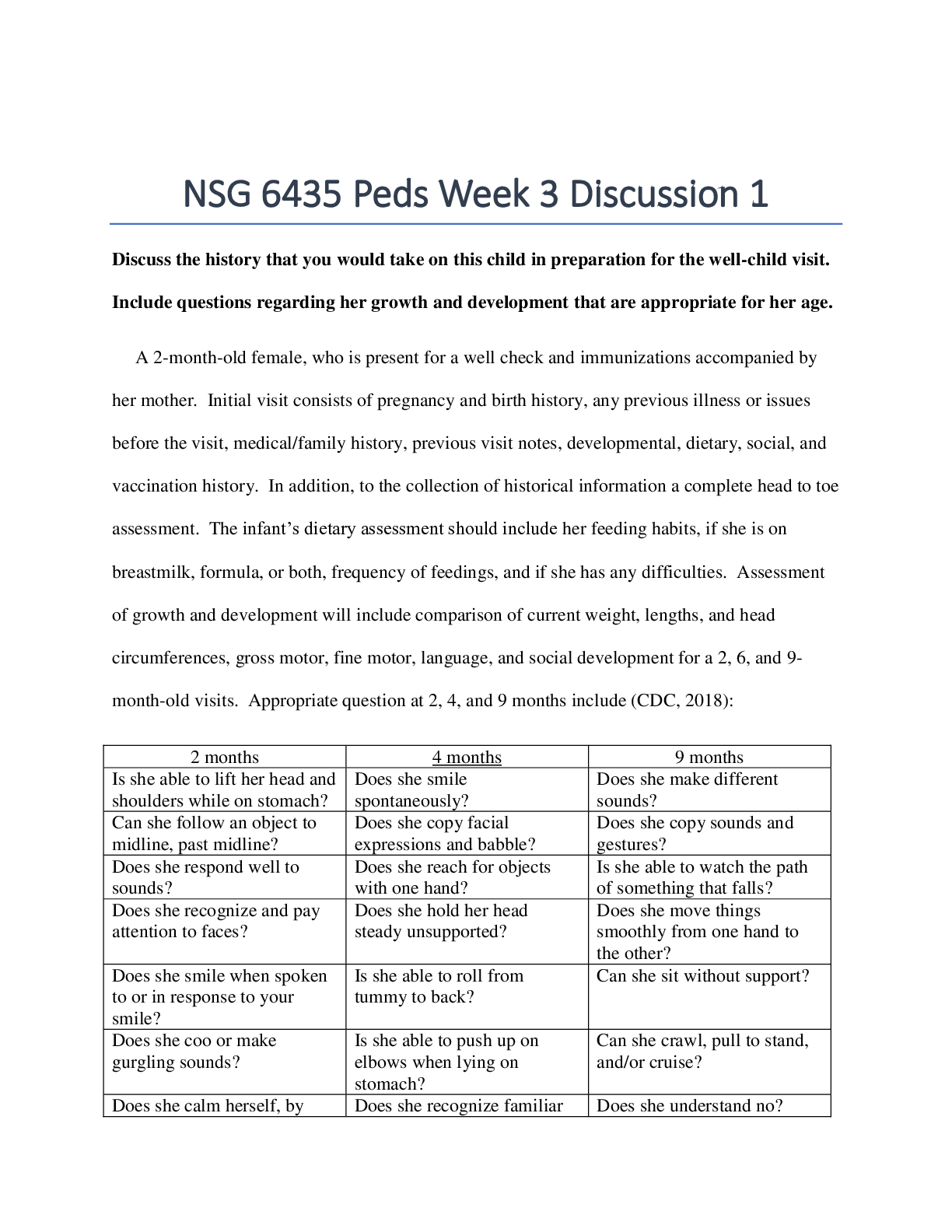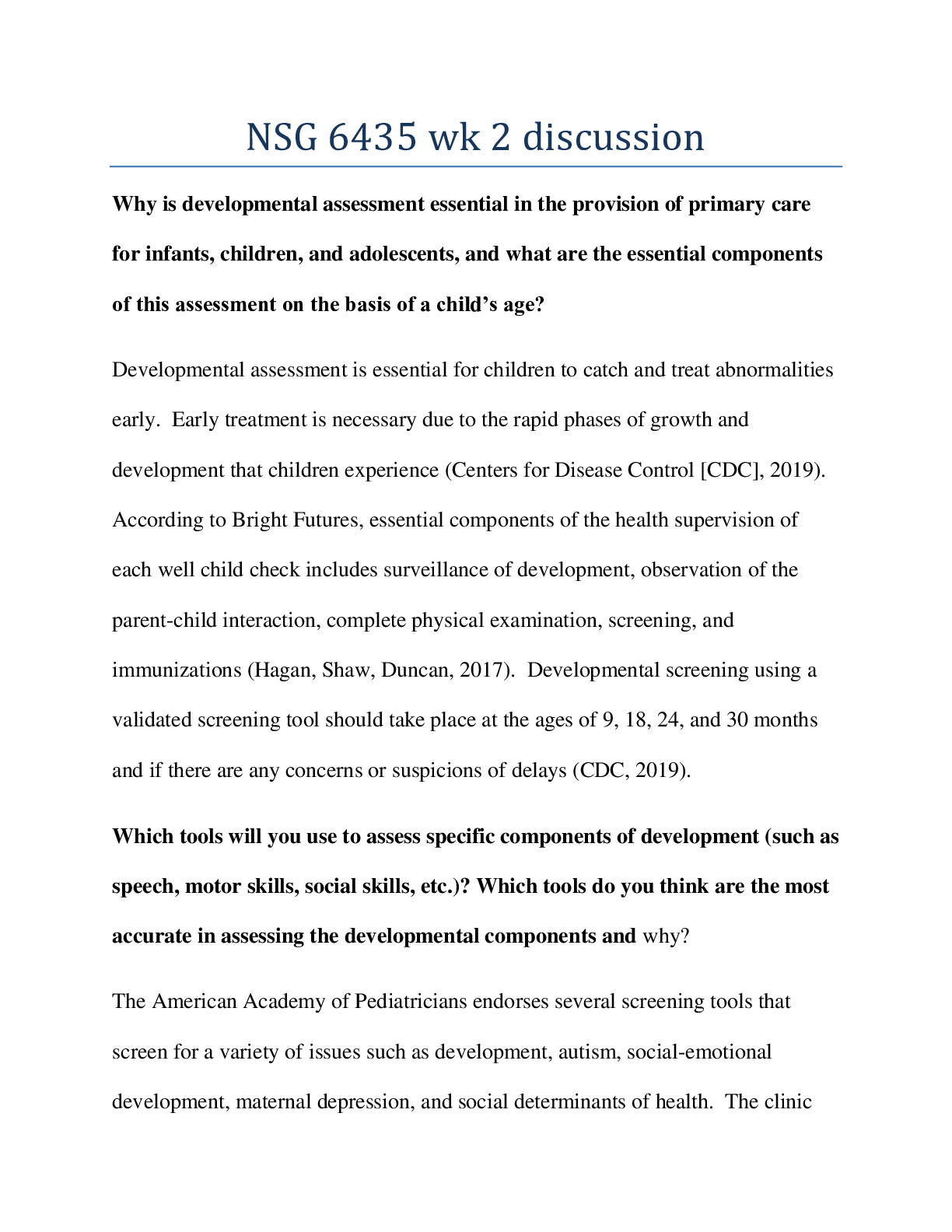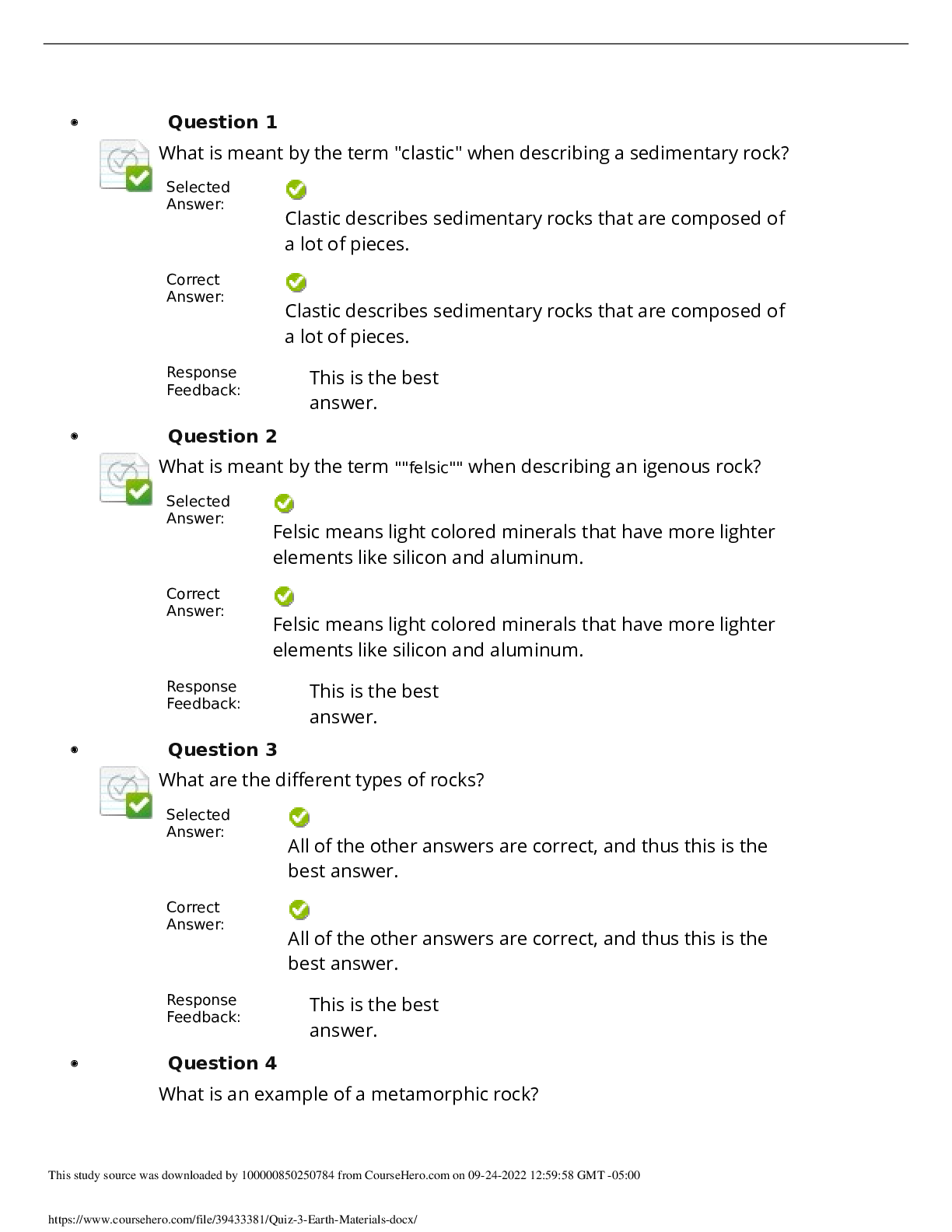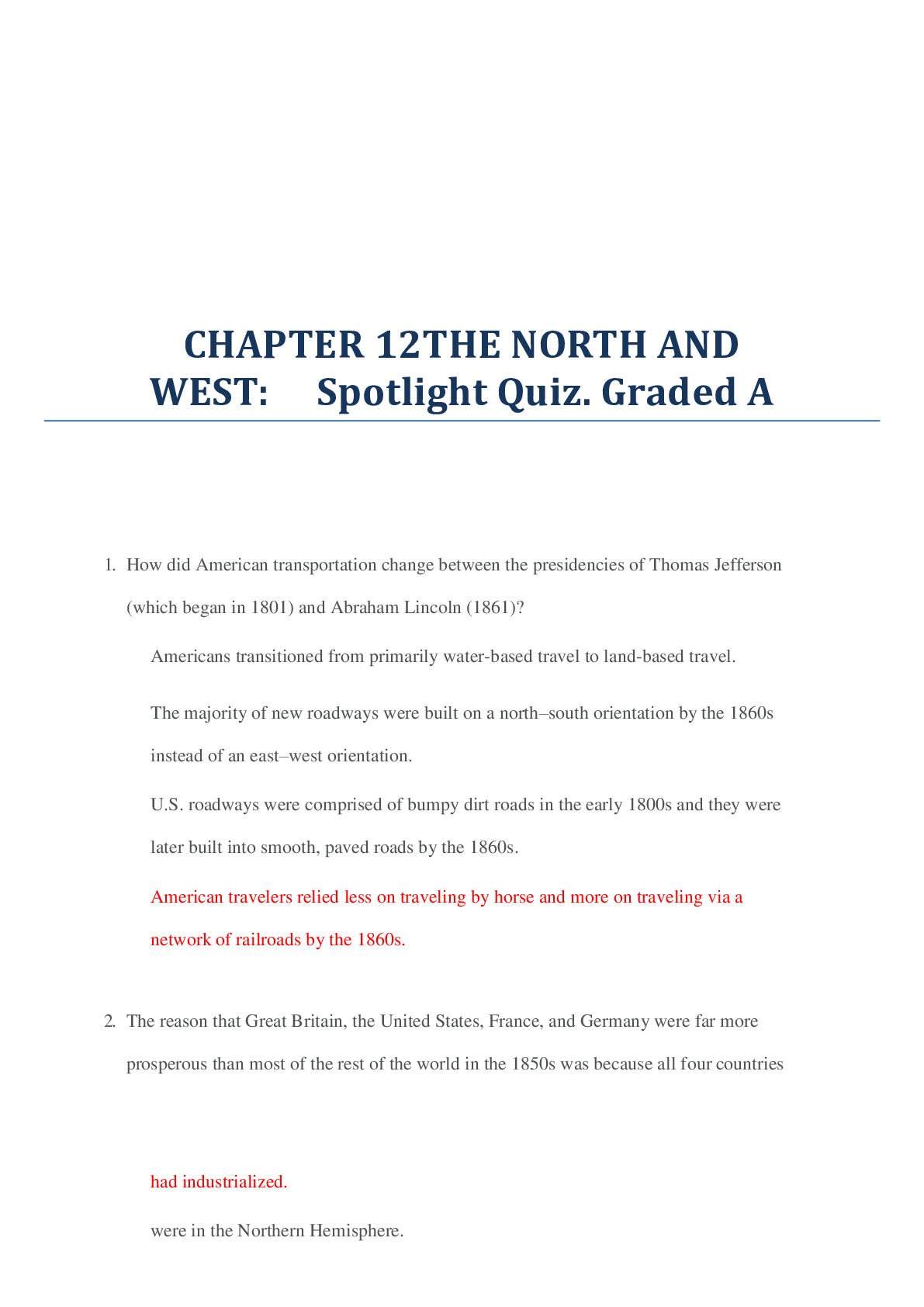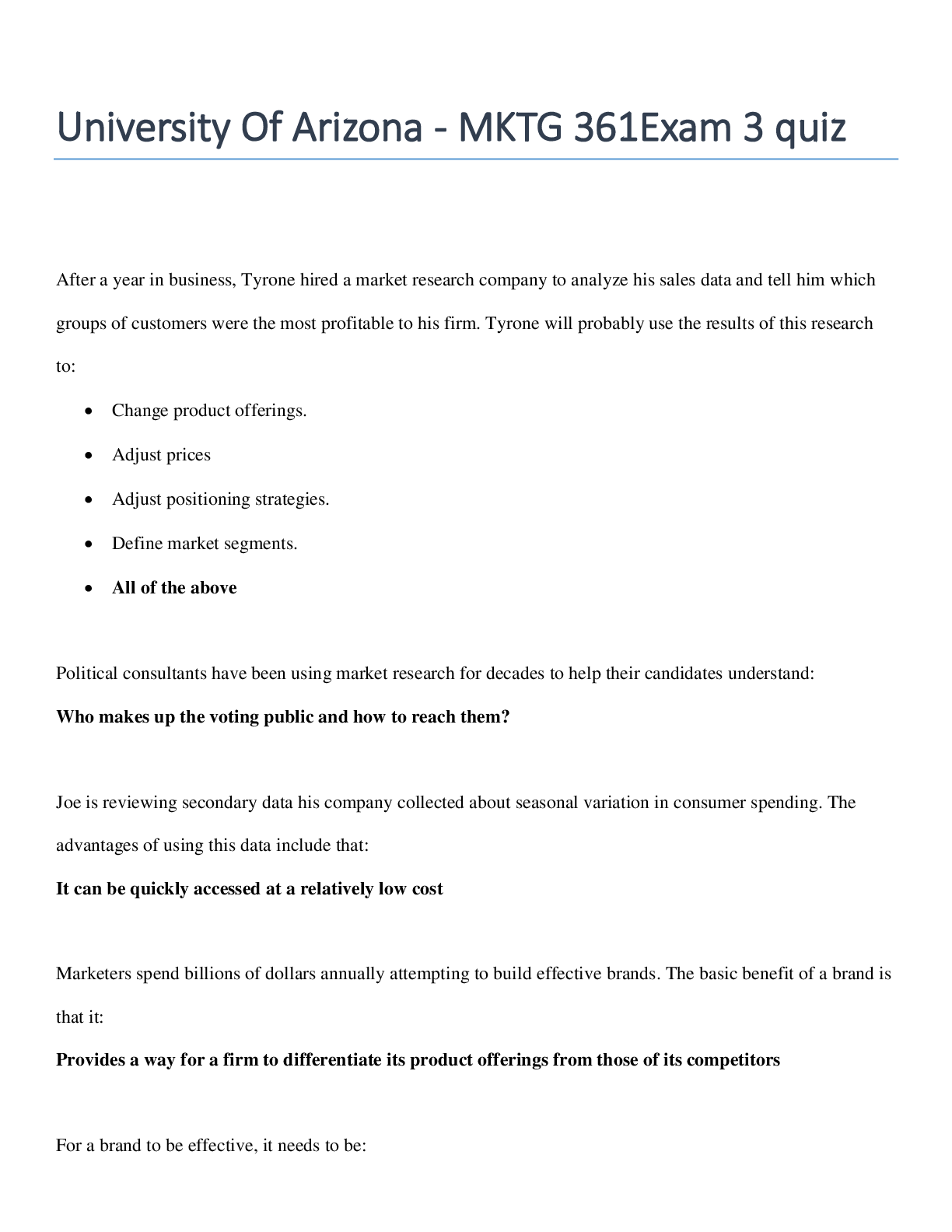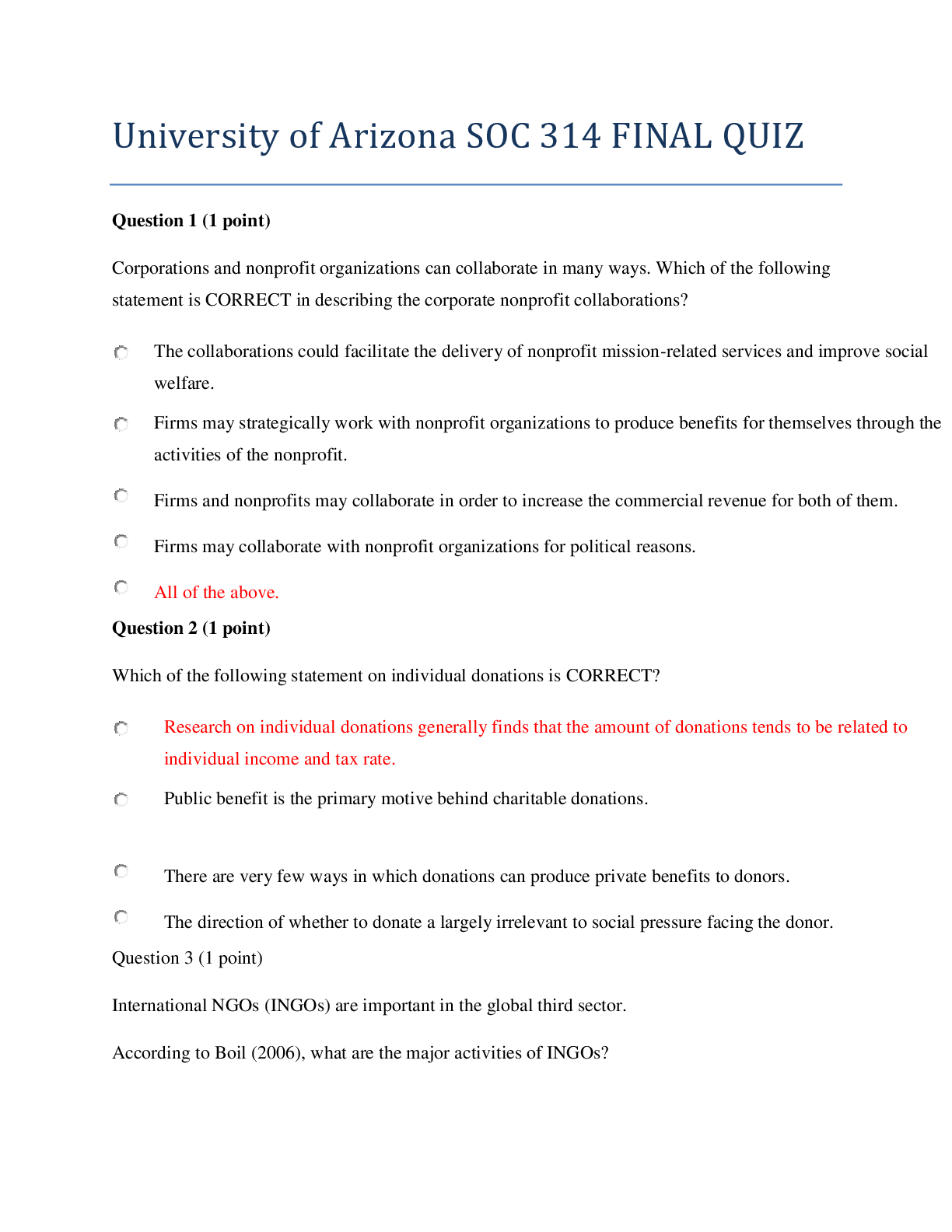*NURSING > QUESTIONS & ANSWERS > Walden University - NURS 6512chapter 7 week #3 quiz. Graded A. 100%. (All)
Walden University - NURS 6512chapter 7 week #3 quiz. Graded A. 100%.
Document Content and Description Below
1. Which recommendation is correct? A. Drink at least 6 cups of water daily. B. Fat should provide at least 40% of caloric intake. C. Limit carbohydrates to no more than 25% of the diet. D. ... Caloric intake is mainly from complex carbohydrates. Correct Complex carbohydrates, such as grains, fruits, and vegetables that contain starches and fiber, should supply the majority of calories in the diet. There is no specific recommendation regarding water intake. Carbohydrates should supply 45% to 65% of caloric intake. Fat intake should be limited to no more than 35% of caloric intake. Awarded 1.0 points out of 1.0 possible points. 2. 2. Which body organ depends on carbohydrates as its only energy supply? A. Brain Correct B. Liver C. Lungs D. Heart The brain uses carbohydrates in the form of glucose for its only energy supply. Persons with severe hypoglycemia develop symptoms related to disturbed mental functioning. The liver, lungs, and heart do not depend on carbohydrates solely for energy. Awarded 1.0 points out of 1.0 possible points. 3. Which common breakfast food increases the bioavailability of medications such as simvastatin and may increase the incidence of adverse effects? A. Coffee B. Orange C. Oatmeal D. Grapefruit Correct Grapefruit is the food that alters how many medications, including simvastatin, are metabolized. This results in a higher risk of adverse effects. Coffee, orange, and oatmeal are not known to interfere with medications significantly. Awarded 1.0 points out of 1.0 possible points. 4. Which condition is associated with decreased serum hemoglobin, hematocrit, and transferrin saturation levels? A. Scurvy B. Iron-deficiency anemia Correct C. Folic acid deficiency anemia D. Vitamin B12 deficiency anemia With iron-deficiency anemia, there are decreased levels of hemoglobin, hematocrit, and transferrin saturation (amount of serum iron that is bound). Transferrin saturation levels are normal in folic acid and vitamin B12 deficiency anemias. Scurvy is caused by a lack of vitamin C in the diet. Awarded 1.0 points out of 1.0 possible points. 5. Which food source contains the most calories per gram? A. Fats Correct B. Protein C. Insoluble fiber D. Carbohydrates A gram of fat supplies 9 calories per gram. Protein and carbohydrates supply 4 calories per gram. Insoluble fiber is not significantly broken down and does not supply calories. Awarded 0.0 points out of 1.0 possible points. 6. 6.ID: 986687171 What is the significance of body mass index (BMI)? A. Indicator of obesity Correct B. Presence of dyslipidemia C. Percentage of saturated fat in diet D. Need for nutritional supplementation BMI is a marker of optimal weight for height and an indicator of obesity. It does not diagnose dyslipidemia or give data regarding the amount of saturated fat in the diet or need for supplementation. Awarded 1.0 points out of 1.0 possible points. 7. 7.ID: 986687178 Which group of patients is most appropriate to have the triceps skinfold testing to estimate body fat stores? A. Obese adults B. Obese children C. Nonobese adults Correct D. Nonobese children Triceps skinfold testing is most appropriate with nonobese adults who are easier to test with this method. The use of triceps skinfold testing is not recommended in children or obese adults because of difficulty with technique and inconclusive results. Awarded 1.0 points out of 1.0 possible points. 8. 8.ID: 986687169 Which intervention will lower serum total cholesterol and improve HDL and LDL levels? A. Decrease fiber in the diet. B. Increase physical activity Correct C. Eliminate fat from the diet. D. Take a multivitamin supplement Increasing physical activity will improve the cholesterol levels. Increasing fiber would also improve cholesterol levels. Fat should not be eliminated because fatty acids are essential for nutrition. Multivitamin supplementation is not a factor in lowering cholesterol levels. Awarded 0.0 points out of 1.0 possible points. 9. 9.ID: 986715114 A patient is following a vegan vegetarian diet. Which nutrients are likely to be deficient in this diet? (Select all that apply.) A. Protein Correct B. Calcium Correct C. Potassium D. Magnesium E. Carbohydrates A patient who follows a vegan vegetarian diet eliminates meat, dairy, and eggs from the diet. These patients are at risk for deficiencies in calcium and protein. Potassium, magnesium, and carbohydrates are found in grains, vegetables, and fruit. Awarded 1.0 points out of 2.0 possible points. 10. 10.ID: 986687146 0<div><div>The formula for waist-to-hip ratio is Waist circumference/Hip circumference. Calculate the waist-to-hip ratio for a woman with a waist circumference of 28 inches and a hip circumference of 40 inches.<br>_______________</div> <br/></div>00falsefalse0.7True11Divide 28 by 40. A waist-to-hip ratio for men of 1.0 or greater and for women 0.85 or greater is indicative of central obesity and an increased risk for obesity-related disorders.True110011 [Show More]
Last updated: 2 years ago
Preview 1 out of 5 pages

Buy this document to get the full access instantly
Instant Download Access after purchase
Buy NowInstant download
We Accept:

Reviews( 0 )
$6.00
Can't find what you want? Try our AI powered Search
Document information
Connected school, study & course
About the document
Uploaded On
Feb 23, 2020
Number of pages
5
Written in
Additional information
This document has been written for:
Uploaded
Feb 23, 2020
Downloads
0
Views
122

